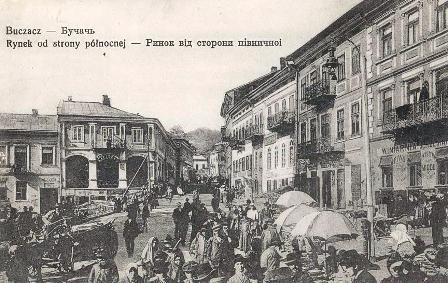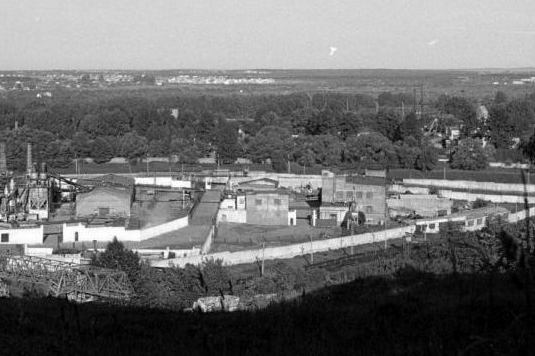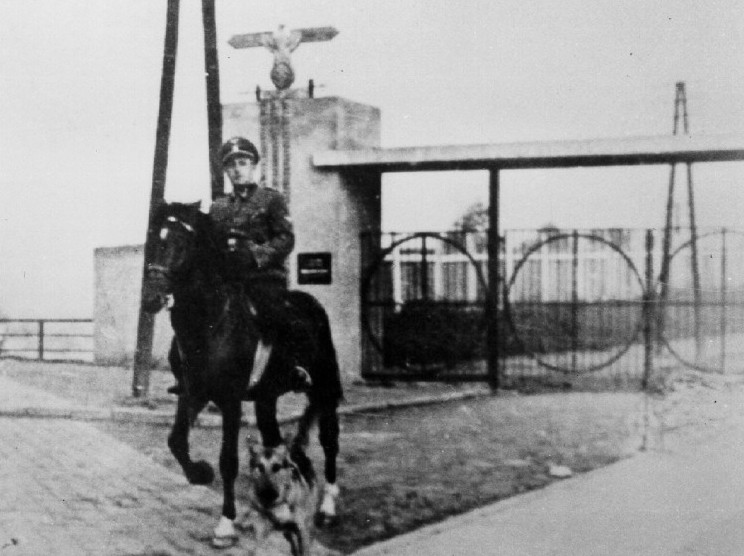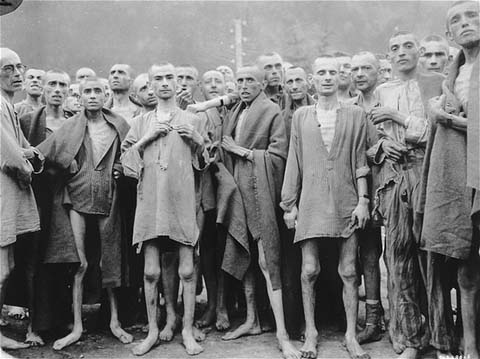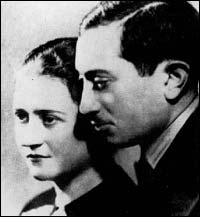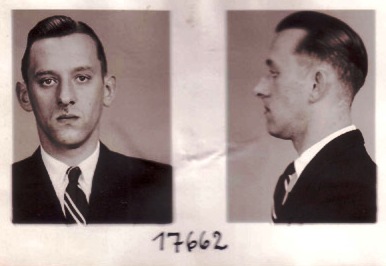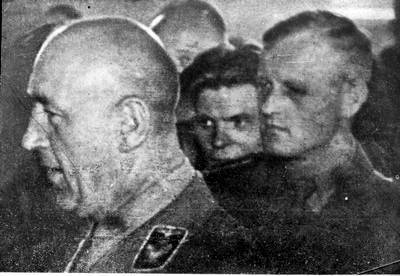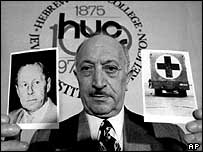Holocaust Education & Archive Research Team |
Ghettos
Introduction to the Ghettos of the Holocaust
Jewish Ghettos The Judenrat Judenrat Leaders Prominent Jews
| ||||||
Simon Wiesenthal "The Nazi Hunter"
Simon Wiesenthal was born on the 31 December 1908 in Buczacz, which is now in the Lvov Oblast area of the Ukraine. His mother took the Wiesenthal family to Vienna, when the Cossacks burst into Buczacz in 1915.
Simon Wiesenthal attended a primary school in Bauerlgasse, Vienna, they returned to Buczacz as his mother wanted to re-marry. Simon Wiesenthal graduated from the Gymnasium in 1928 and applied to the Polytechnic Institute in Lvov. He was barred admission because of restrictions towards Jewish students.
Denied access Wiesenthal was accepted by the Technical University of Prague, from which he obtained a degree in architectural engineering in 1932. In 1936 Simon Wiesenthal married Cyla Muller, whom he had known from school and he found employment in an architectural office in Lvov. Their happiness was short lived.
The Russian army occupied Lvov as part of the Nazi – Soviet “non-aggression” pact which divided a conquered Poland between the two major powers. Simon Wiesenthal’s stepfather was arrested by the NKVD – Soviet Secret Police and he eventually died in prison, his step-brother was shot and Wiesenthal became a mechanic in a bed-spring factory.
He bribed an NKVD commissar to save his wife, his mother and himself from deportation to Siberia. Following the German invasion of Russia in June 11941, eight days later the last Russians left Lvov and the inhabitants first saw German uniforms albeit worn by auxiliary troops, who initiated a series of pogroms against the Jewish population.
Simon Wiesenthal was in hiding on the afternoon of the 6 July 1941 in a cellar was arrested along with approximately one hundred professionals, such as lawyers, doctors and teachers to the Brygidki prison.
Those arrested were ordered to stand in several rows facing the wall and to fold their arms behind their necks. A Ukrainian started the execution by shooting from the left end of the first row, two of his helpers flung the bodies into wooden boxes, which were dragged away.
The executions lasted throughout the afternoon, the church bells rang, and the Ukrainians halted the slaughter with the words, “Enough for now, vespers.” Wiesenthal stood ten yards from the executioner. A Ukrainian he used to know, by the name of Bodnar, wearing an armband of a Ukrainian auxiliary policeman, managed to extricate Wiesenthal from the prison claiming he was a Soviet spy, and he deportations from Lvov to Belzec took place from the 15 March 1942.
The largest deportation from Lvov to Belzec took place between the 10 August to the 23 August 1942,in this transport was Simon Wiesenthal’s sixty-three year old mother. She probably perished in the gas chambers at Belzec, his wife’s mother was shot dead on the steps of her house by a Ukrainian police auxiliary, shortly afterwards.
In the Ostbahn Repair Works Wiesenthal was able to make contact with the Polish resistance, and in exchange for plans of the Railroad station, Cyla was able to escape and was provided with false papers, using the name Irene Kowalska. The Ostbahn repair shops came under the control of a German railway official called Heinrich Guenthert, Wiesenthal’s immediate supervisor Chief Inspector Adolf Kohlrautz.
They treated the Jews humanely, however, on the 20 April 1943, the safe haven for Wiesenthal and three other workers ended, they were collected early in the morning and taken to Janowska.
This was despite the two above mentioned Germans protesting, the SS paid no head to this, they wanted to murder some Jews to celebrate Adolf Hitler’s birthday. The twenty or so Jews selected by the Nazis were made to stand in the so-called “tube” a two meter wide corridor between barbed wire fences. At the end of the so called “tube” was a sandpit into which the bodies fell.
Wiesenthal was rescued from certain death by his German supervisors Kohlrautz drove to Janowska on Guenthert’s instructions and rescued Wiesenthal from the “Tube,” by demanding the return of their painter, in order to paint a banner celebrating the Fuhrer’s birthday.
In 1943 his Nazi Supervisor Kohlrautz encouraged Wiesenthal to escape and he issued a pass authorising him to buy painting materials in Lvov. Wiesenthal easily lost his Ukrainian guard by leaving a stationery shop by the back door.
He was able to hide in a friend’s house until one evening in April 1943 when a German soldier was shot dead in the street, and SS troops and Gestapo men searched adjacent houses for missing weapons, and found Wiesenthal instead.
On the 15 April 1943 Simon Wiesenthal attempted to commit suicide on his way to the Gestapo, by slashing his wrists, with a concealed razor blade. The Gestapo nursed him back to health, in order to execute him, which was often the way the Nazis operated.
One day a Soviet airplane was shot down over Sapieha Street and exploded in the Gestapo building, during the smoke and confusion Wiesenthal was able to run across a yard and mingle with another group of Jews destined for deportation.
The destination was not however far, he found himself back in Janowska Camp again, where the brutal camp commandant SS Hauptsturmfuhrer Freidrich Warzog welcomed him back, with the words, “one of my regulars” and the “prodigal son returned home.”
Simon Wiesenthal and some other inmates decided to try and escape on the night of 16 July 1944 as the Russians advance neared. One of his fellow escapees was called Lola, whose sister had sheltered him and her brother –in-law Josef Busch, before they were discovered in April 1943.
One of his fellow escapees possibly Moldauer cut a hole in the barbed wire, Lola and the others managed to escape, but the guards spotted the escapers and opened fire. Wiesenthal made it back to his hut somehow and when the Nazis had counted the prisoners, twenty-seven inmates were led to the “Tube” and the waiting pit, for execution.
After waiting for hours SS-Hauptsturmfuhrer Warzog who made a surprise announcement the SS Police Leader of Galicia Katzmann had decided to “save their lives and that they would be leaving Janowska with the SS guards.” Shortly afterwards the SS evacuated the prisoners and so began the trek westwards, this was an arduous journey through a number of camps such as Plasow, Gross Rosen and Buchenwald.
From Buchenwald three thousand internees were loaded onto open lorries on the 3 February 1945 and transported to the Mauthausen concentration camp in Austria. When the convoy reached Mauthausen on the 7 February 1945, only 1200 of the 3000 men who had left Buchenwald concentration camp were still alive, including Simon Wiesenthal.
Wiesenthal lay in Hut –B of the aptly named death block waiting for death, on the 5 May 1945 weighing only about 110 pounds he staggered outside the barrack to greet the first American tank that came to liberate the camp. Having survived the holocaust a new chapter started in the life of Simon Wiesenthal, he sought out the American Officer in charge, to raise a complaint and stepped through a door marked “War Crimes” and shortly after began working there.
Wiesenthal’s immediate supervisor was a Captain Taracusio, a professor of international law in Cambridge Massachusetts, who greatly influenced Wiesenthal’s views about dealing with War Criminals.
Wiesenthal did not seek revenge, he sought justice, he began gathering and preparing evidence on Nazi atrocities for the War Crimes Section of the United States Army. He also worked for the Army’s Office of Strategic Services and Counter –Intelligence Corps, and headed the Jewish Central Committee of the American Zone of Austria, a welfare and relief organisation.
Late in 1945 he and Cyla were re-united, each thought the other had died and in 1946 their only child Paulinka was born. Wiesenthal ended his association with the United States Army in 1947 and with thirty volunteers he opened the Jewish Historical Documentation Centre in Linz, Austria.
The purpose of this centre was to assemble evidence for future war crimes trial, but with the onset of the Cold War between the United States of America and the Soviet Union intensified, interest in prosecuting Nazi war criminals waned and the volunteers felt dispirited.
In 1954 the office in Linz was closed and the evidence Wiesenthal and his volunteers had accumulated was passed to the archives in Yad Vashem, apart from his files on Adolf Eichmann, the RSHA Jewish expert.
In April 1959 Simon Wiesenthal noticed an obituary notice for Frau Maria Eichmann in a Linz newspaper, and amongst the mourners was listed Vera Eichmann, in addition to this in February 1960 a newspaper carried the death notice of Eichmann’s father Adolf Karl, and Vera Eichmann and the boys were listed amongst the mourners.
Wiesenthal also passed this latest information onto the Israeli’s who were now pursuing Eichmann with a lot more vigour. Eichmann was captured in Buenos Aries on the 11 May 1960 and brought to Israel to stand trial for war crimes. Eichmann was found guilty and was executed in Ramleh prison, Jerusalem on the 31 May 1962.
Wiesenthal encouraged by the capture and justice meted out to Eichmann, re-opened the Jewish Documentation Centre, this time in Vienna, and concentrated solely on the hunting of Nazi war criminals.
Among his high priority cases was Karl Silberbauer, the Gestapo officer who arrested Anne Frank, the fourteen year old German –Jewish girl who was in hiding in a secret Amsterdam attic with her family between 1942 and 1944, and who eventually died in Bergen Belsen concentration camp in March 1945.
Her diary published by her father Otto Frank in 1947 has become a symbol against anti-Semitism. Wiesenthal located Silberbauer, who was working as a police inspector in Austria in 1963. Silberbauer confessed when confronted said, “I arrested Anne Frank.”
The next high profile Nazi war criminal Wiesenthal helped bring to justice was Franz Stangl the former commandant of the Sobibor and Treblinka death camps in Poland. Wiesenthal was alerted to the fact that Stangl was living in Brazil working in a Volkswagen factory.
Stangl was arrested in Brazil on the 28 February 1967 and was extradited to the then West Germany, where he was tried for the co-responsibility for the mass murder of 900,000 Jews at Treblinka. He was found guilty and sentenced to life imprisonment on the 22 October 1970. He died of heart failure in Dusseldorf prison on the 28 June 1971.
The same year that Stangl was arrested, Simon Wiesenthal published his first book – “The Murderers Among Us” and whilst in America to promote the book he announced that he had found Mrs Hermine Ryan, nee Braunsteiner, a housewife living in Queens, a suburb of New York.
Braunsteiner was an SS female guard at the Majdanek concentration camp in Poland and had supervised the murder of hundreds of children at the camp, during the war. On the 6 August 1973 Hermine Braunsteiner was extradited from the USA and taken to the then West Germany, to stand trial for war crimes committed in the Majdanek (Lublin) during the war.
The trial opened in Dusseldorf of ten male and five female former camp guards commenced on the 26 November 1975. The trial dragged on for five long years and on the 30 June 1981 Hermine Braunsteiner was sentenced to life imprisonment.
It is remarkable to think that Simon Wiesenthal with a small staff of four people, in a sparsely furnished three-room office, could track down so many major war criminals. In this work he was aided by a vast informal international network of friends, colleagues. When his painstaking work is complete, he hands the dossiers over to the appropriate authorities, if they do not pursue with vigour, then he sought out the media, often with outstanding results.
For his work Simon Wiesenthal was honoured by many Governments for his unceasing work on brining war criminals to justice, he was awarded decorations from the Austrian and French resistance movements, the Dutch Freedom Medal, the Luxembourg Freedom Medal, the United Nations League for the Help of Refugees Award, the United States Congressional Gold Medal presented to him by US President Jimmy Carter in 1980 and the French Legion of Honour which he received in 1986.
Wiesenthal acted as a consultant for the film “The Odessa File” released by Paramount in 1974 and “The Boys From Brazil” released by Twentieth Century Fox in 1978. Also in 1981 the Wiesenthal Centre produced the Academy Award winning documentary Genocide, narrated by Elizabeth Taylor and the late Orson Welles, which was introduced by Simon Wiesenthal.
Hunting war criminals carries some risks Wiesenthal received numerous anonymous threats and insults. In June 1982 a bomb exploded at the front door of his house, causing a great deal of damage, fortunately no one was hurt.
Since then Wiesenthal’s house and office were guarded by armed policemen. One German and several Austrian neo-Nazis were arrested for the bombing, the main perpetrator a German, was sentenced to five years in prison.
Wiesenthal said: “When history looks back I want people to know the Nazis weren’t able to kill millions of people and get away with it.”
Simon Wiesenthal died on the 20 September 2005 at his home in Vienna, aged ninety-six.
Sources: Encyclopedia of the Holocaust Edited by Yisrael Guttman – published by MacMillan Publishing Company New York 1990 Justice Not Vengeance by Simon Wiesenthal published by Weidenfeld and Nicolson London, 1989 Simon Wiesenthal Centre National Archives – Kew Wiener Stadt Landesarchive Anne Frank in the World published by the Anne Frank Stichting Amsterdam 1985 Holocaust Historical Society
Copyright: Tim Flynn & Victor Smart H.E.A.R.T 2009
|

